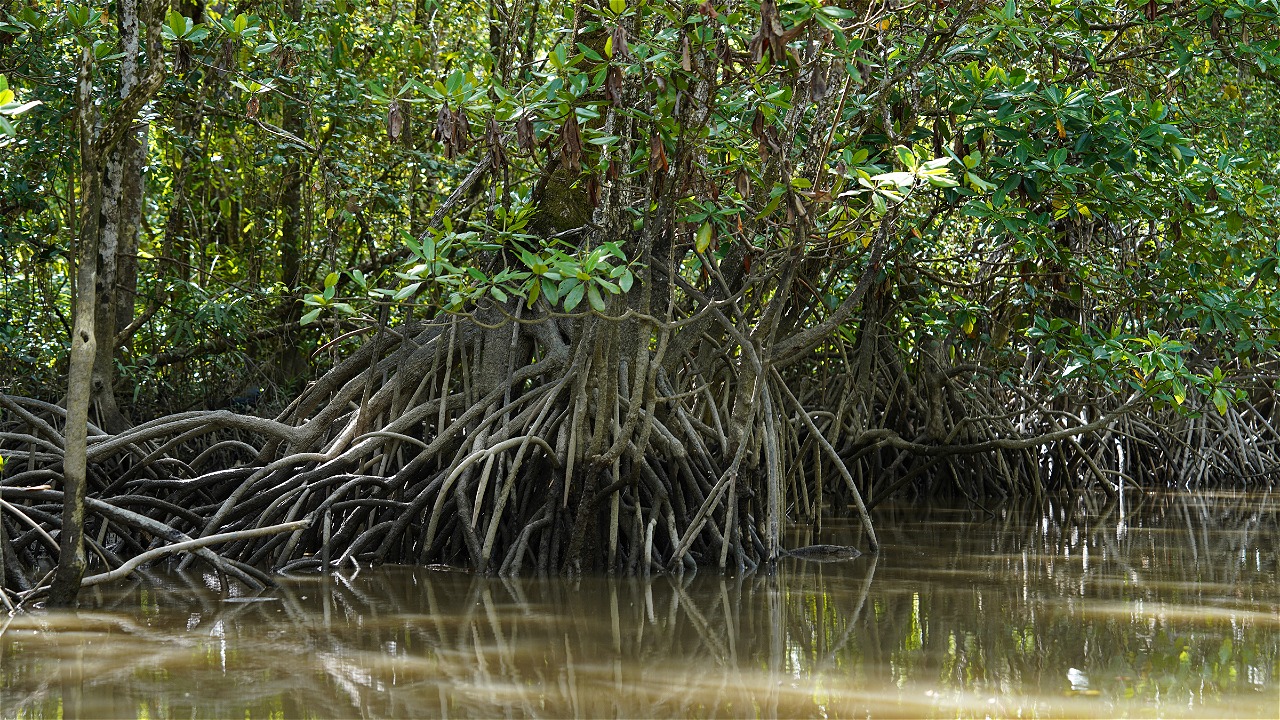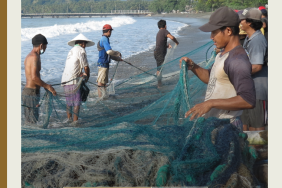GARDA MANGROVE, A YOUTH COMMITMENT TO GUARD THE COAST OF SOUTH SULAWESI THAT WAS BORN ON WORLD MANGROVE DAY
By: Idham Malik (Aquaculture Staff, WWF-Indonesia)
World Mangrove Day (07/26/2018) was commemorated with a bang at Lumpu'e Beach, Pare-Pare City. Pare-Pare City, South Sulawesi. Various environmental care communities united to form Garda Mangrove, a collaborative initiative for the collective and sustainable improvement of coastal ecosystems.
Garda Mangrove was formed from the joint commitment of communities that have planted mangroves twice in Pinrang Regency, South Sulawesi. In the future, Garda Mangrove will oversee the rehabilitation of mangrove Pinrang - Pare, by involving environmental communities in the area.
At Lumpu'e Pare-Pare Beach, Pare-pare City, South Sulawesi, Garda Mangrove was officially formed as a grassroots movement, in a meeting between environmental communities in Pinrang Regency and Pare-Pare City. WWF-Indonesia, Aquaculture Celebes Community, Telapak University of Muhammadiyah Pare (UMP), Mispala - Cosmocentris UIN Pare - Pare, Suppa Youth Student Community, Setapak Parepare, Bumi Lestari, Kelapa Adventure, Mapala Abadi, and Stepa UMP Pare-Pare together signed the Garda Mangrove commitment form.
"The commitment that we signed is the readiness to rehabilitate mangroves on the coast of Pinrang - Pare, implement an environmentally friendly lifestyle, conduct research activities, and clean up garbage around the coast of Pinrang and Pare," said Wahyudin Hasan, a member of Garda Mangrove from Aquaculture Celebes Community.
The meeting was interspersed with community music performances to refresh the atmosphere and entertain themselves while contemplating environmental conditions.
A long-standing joint rehabilitation action
The joint action between these communities has started since the planting of mangroves in the tiger shrimp farming area of Pallameang Village, Mattirosompe District, Pinrang, on June 22-23, 2018, which was attended by around 100 youth from 15 communities, including Aquaculture Celebes Community (ACC), Marine Buddies Makassar, Earth Hour Makassar, Sobat Bumi, KOSALAM, KOMPAS, Pejalan Pinrang, KPA UMP Pare, Kosmocentris IAIN Pare Pare.
Continued on July 14-15, 2018, about 50 environmental activists consisting of students and local youth continued planting mangroves to rehabilitate the coast of Pare Bay in Tasiwali'e Village, Suppa District, Pinrang, inviting environmental communities in Pare-Pare and Pinrang Regencies to participate in planting mangroves.
They are Lanrisang Nature Lovers Community, Muhammadiyah University of Pare (UMP) Nature Lovers Community, Kelapa Adventure, Unhas Fisheries Master program students, IAIN Pare - Pare Cosmocentris Community, Hasanuddin University Identity Campus Newspaper, and Suppa Pinrang Student Youth Association. The activity lasted for two days to plant around 4000 trees of mangrove type Rizhopora (mangrove).
The mangrove planting activity twice with a total of about 10,000 trees planted was initiated by the Aquaculture Celebes Community (ACC) supported by WWF-Indonesia and PT Bogatama Marinusa (BOMAR).
The community successfully planted mangroves along 2 kilometers of coastline to support the improvement of coastal boundaries and water quality useful for shrimp and fish farming. Currently, shrimp production is not as productive as it was 20 years ago, when calculated by survival rate.
This is due to the declining quality of the environment, resulting in the inability to control diseases. This is accompanied by the use of sometimes poor seedlings and aquaculture management that has not fully followed the recommendations of the fisheries authorities.
What is the importance of planting mangroves?
Technically, when mangroves grow and widen the coastal border, it is very useful to prevent coastal abrasion that can erode the pond area. In addition, the presence of mangroves is also a habitat for species of the mangrove ecosystem, including fish, wild shrimp, shellfish, and crabs.
In addition to planting mangroves, environmental communities also assisted in the nursery process by filling sand material into polybags. In addition, discussions on mangrove and plastic waste management took place, as well as follow-up communication between communities for environmental improvement in coastal Pinrang. This then initiated a joint commitment with Garda Mangrove. A week after the mangrove planting in Pare Bay (21/07/2018), Garda Mangrove conducted a mangrove nursery involving students from SMK 2 Pinrang.
Beach cleanup action and coastal waste data
Proving Garda Mangrove's commitment to conducting research activities and cleaning up coastal waste, the day after the inauguration of Garda Mangrove (27/08/2018), ACC together with Garda Mangrove conducted a beach cleanup at Lumpu'e Beach. While cleaning up the garbage, they recorded the garbage using the plastic waste survey method previously trained by WWF-Indonesia and the Faculty of Marine and Fisheries of Udayana University, namely the Commonwealth Scientific and Industrial Research Organization (CSIRO) Global Plastic Pollution Project, Australia.
We recorded the amount and type of waste found through observation transects. Of the total 168 debris found, 38% were hard plastic, 16% soft plastic, 23% were plastic straws, 9% rope, 8% styrofoam, and the remaining 7% were bottles, paper, and packaging ropes.
PT Bomar, supported by WWF-Indonesia, is committed to rehabilitating 30 hectares of mangroves which, if converted, would amount to 60,000 trees. Currently, about 10,000 trees have been planted. Hopefully, this can be realized with the unity between environmentalist communities, especially those based in Pinrang - Pare-Pare. And hopefully, in the future, Garda Mangrove can continue the mangrove rehabilitation in Pinrang that has been pioneered by PT Bomar and WWF-Indonesia.





